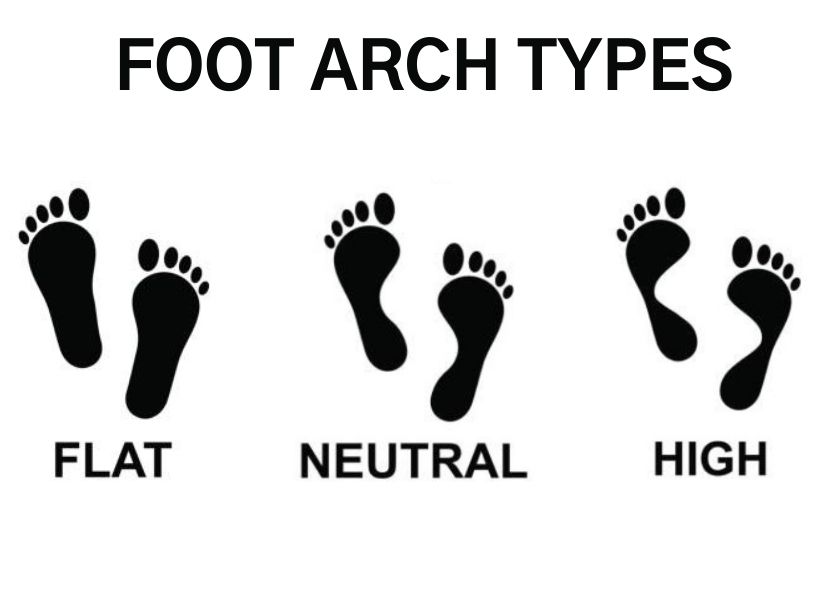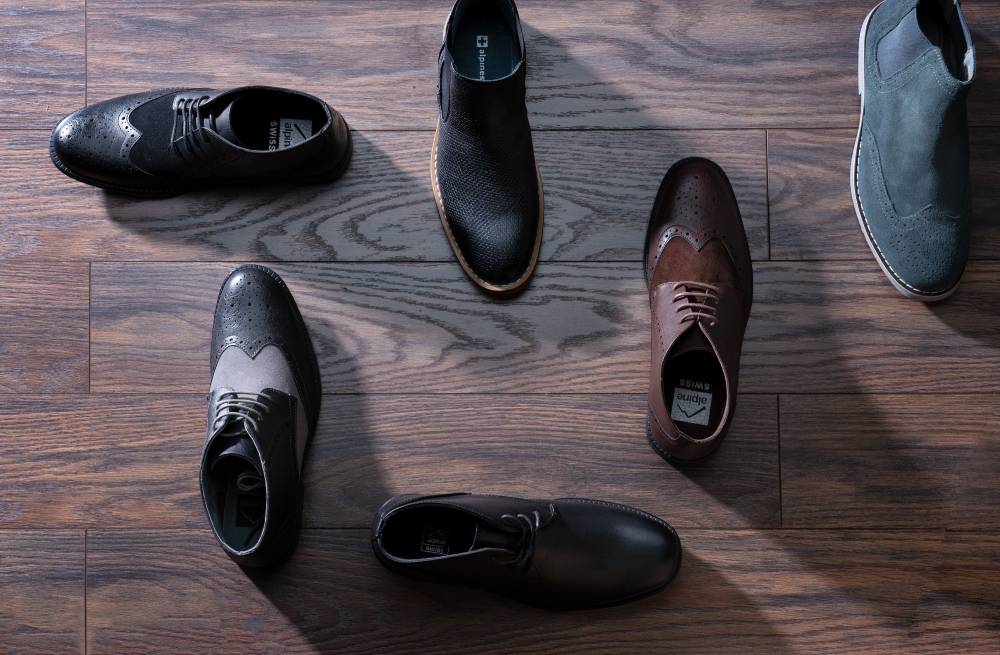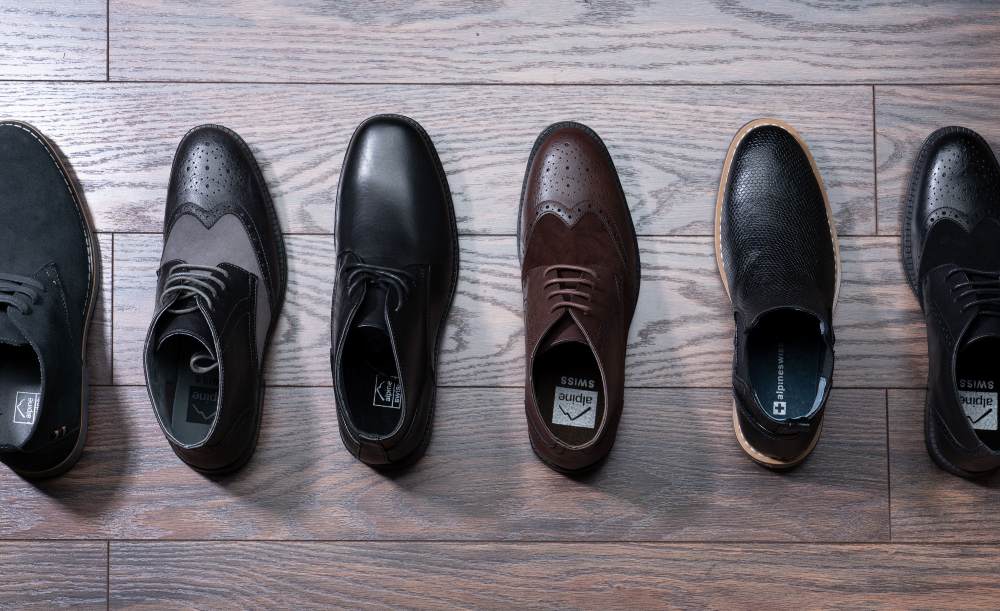How To Choose the Right Shoes for Your Foot Type
2021-05-29
The right shoes will take you to some of the best adventures in your life. Make sure you pick the size, type, and cushioning that will give you support, comfort, and protection every step of the way. In this guide, know how to determine your foot type and learn about the most important factors to consider when shopping for the right shoes. Ready? Let’s get running!
How To Determine Your Foot Type
When selecting the right shoes, it's important to understand what pronation is. Pronation refers to the way your foot rolls inward and distributes impact upon landing. Based on pronation, there are three major foot types: neutral, flat, and high-arched.

Normal Arch
Most people or about 60% of the population have normal arches. Also called "medium foot", this is characterized by slight pronation. You have a normal arch when your foot lands on the outside of your heel then rolls inward. This movement evenly supports your body weight and lowers the impact upon landing.
Flat Foot
Also called "overpronation", you have this foot type when the arch of your foot collapses excessively downward or inward. Flat-footed people tend to overpronate, which means their feet roll inward too much when running or standing. In people who overpronate, the big toe and second toe do the majority of the work. Overpronation puts people at an increased risk of injuries so they need shoes that provide adequate support and stability. If you are flat-footed, you will benefit from shoes that feature a straight last and motion control.
High Arch
This foot type is the least common and accounts for less than 20% of runners. People with a high arch are also called under pronators. This foot type is characterized by having rigid arches. Because of this, an excessive amount of weight is placed on the ball and heel of the foot. If you have high arches, your feet may not absorb shock well, especially if you perform a lot of high-impact physical activities like jumping or running. The pressure is placed on the smaller toes on the outside of your foot. Shoes with thick cushioning help compensate for the lack of natural shock absorption. Not sure about your foot arch type? It's easy.
Follow these steps:
- Dip your foot in water then step on a piece of cardboard.
- Try to examine your footprint. If the middle part of your arch is about half-filled, you have a normal arch. If your footprint looks like a complete foot, then you have a flat arch. If very little remains in your footprint, you have high arches.
How To Find the Perfect Shoes for Your Foot Type

Footwear products come in numerous styles. When shopping for shoes, make sure to consider your foot type.
Normal Arch
If you have a normal arch, stability shoes are best for you. These shoes typically come with added arch support on the sides and a high-density midsole. They're built with a gentle arch from front to back, a stable rear-foot, and a more flexible forefoot. Having normal arches, you have virtually endless choices for both formal and casual shoes. Nonetheless, whether you’re looking for another pair of dress shoes or sneakers to add to your wardrobe, consider choosing a shoe that offers support for your arch.
Flat Arch
Runners who are flat-footed should look for shoes with motion control. These shoes are usually made with a rigid midsole made of either plastic, fiberglass, or high-density foam. Motion-control shoes have thicker arches. They are intended to limit excessive foot movement by reducing the extent of pronation. These shoes are also ideal for heavy runners as they help reduce the overuse of certain muscle groups, which lowers the risk of fatigue. When it comes to formal footwear, you want to look for shoes with midsoles that reduce pronation. Kicks with memory foam footbeds are also ideal for flat-footed individuals, ensuring all-day comfort and support. Some dress shoes come with a leather-covered inlay sole that protects and supports low arches.
High Arch
Runners who tend to underpronate should look for shoes that offer hefty cushioning. These are highly flexible shoes that are usually made of lightweight materials. The opposite of motion control shoes, cushioning shoes have very minimal rigidity to help distribute impact evenly. Furthermore, the cushioning along the outside of the shoe prevents your foot from rolling outward. If you have high arches, finding the right dress shoes can be a challenge. Look for the shoe equipped with arch supportand a high-density midsole that offers shock absorption and motion control. Dress shoes with orthotic traits, such as a removable EVA footbed, are also a good choice.
Tips To Find the Perfect Shoes

- Make sure it fits! If your shoes are too tight, they are likely to rub on your skin, causing painful blisters. If it's too big, you won't get enough support. Look for a shoe that won't push your toes or make them curl.
- Shop for shoes in the afternoon. According to experts, our feet naturally expand with use during the day. It’s best to find a shoe that fits your foot at its largest. Otherwise, you might end up buying a shoe that is a little too tight for you.
- Wear socks when you try on a shoe.
- Have your feet measured. This way, you’ll know the right size of shoes to try.
Final Words
The right shoes should make you feel comfortable right away. Unless you’re buying hiking shoes, most running shoes, casual, and formal footwear don’t need breaking in. By taking into consideration your foot type and the proper fit, you’ll be able to find the best shoes that will give you comfort and protection all day long.

Mariam Simmons
Mariam Simmons is a fashion enthusiast and Content Manager at Alpine Swiss. She loves traveling to the world’s top stylish destinations and gets inspired to create helpful fashion and lifestyle guides. With over a decade of writing experience, her main goal in creating content is to ensure readers learn something useful and provide value instead of noise.

